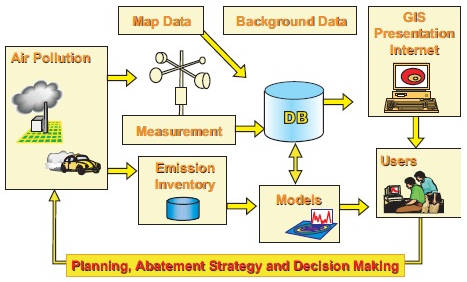To limit the effect of air pollution on citizens, policy makers need advanced decision making tools in order to shorten the response-action time to immediately mitigate abnormal air pollution due to human activities (e.g, traffic, industry, fuelwood and road dust). A key component of this tool is an autonomous Air Quality Management System (AQMS) providing real-time accurate air quality prediction on demand based on the data provided by Internet of Things (IoT) devices deployed in cities.

Existing machine learning based prediction solutions for IoT systems either offload input sensor data to large ML models, such as deep neural networks (DNNs) in the Cloud, with the associated communication costs, latency issues and privacy concerns, or perform classification directly on the IoT and edge devices using simple ML models, e.g., linear Support Vector Machine (SVM), leading to reduced air quality assessment accuracy. Distributed deep learning neural networks (DDNN) can address these issues through mapping the learning model on devices from the IoT-level to edge and cloud.
This master thesis project focuses on DDNN-based prediction models for IoT-Edge-Cloud deployments in the context of AQMS. The project will be carried out in collaboration with NILU (Norwegian Institute for Air Research). The student is expected to explore DDNN- and federated ML- based prediction in the context of a smart city application scenario proposed by NILU. Specifically, the student will work on one or more deep learning neural networks for predicting air pollution and then propose a solution for creating the equivalent DDNN over a given set of network nodes, from IoT to edge and the Cloud.
Description of tasks:
- Literature review
- Explore applicability of promising ML models
- Device solution based on chosen ML model(s)
- Comparative evaluation
Prerequisite:
- Machine learning
- Distributed systems
- Solid coding skills
Contact information:
- send email to frank@ifi.uio.no and amirhost@ifi.uio.no
- or join Zoom meeting https://uio.zoom.us/j/65031453358 on 13th October at 14:00
References
- S. Teerapittayanon, B. McDanel, and HT Kung. Distributed deep neural networks over the cloud, the edge and end devices. In Proc. 37th IEEE International Conference on Distributed Computing Systems (ICDCS), pages 328–339 (2017)
- Li, E. et al, Edge AI: On-Demand Accelerating Deep Neural Networks Inference via Edge Computing, IEEE Trans on Wireless Comm (2019)
- N. Abbas, Y. Zhang, A. Taherkordi, T. Skeie, Mobile Edge Computing: A Survey, IEEE Internet of Things Journal, 5(1) (2018)
- D. Lan, A. Taherkordi, F. Eliassen, G. Horn, A Survey of Fog Programming: Concepts, State of the Art, and Research Challenges, Proceedings of the 2nd International Workshop on Distributed Fog Services Design, https://doi.org/10.1145/3366613.3368120 (2019)
- https://medium.com/@ODSC/what-is-federated-learning-99c7fc9bc4f5